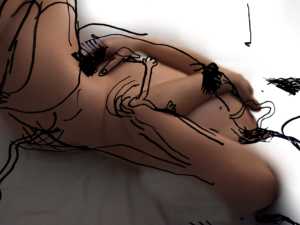The 1960s were a decade of profound changes. These were the years of newfound freedom and a new taste for novelty. This era was definitely turned towards the future, unlike its predeceasing decade, the 1950s, which instead reinterpreted pre-war codes to reassure and appease the crowds. A generational clash was inevitable. This led to the emergence of protests and social movements. This was reflected in the women’s silhouette of the time.
The 60s were characterised by a takeover of the youth who sought a total break from their parents and authority. The figure of the woman is an example of this chronological, rapid break as it is diametrically opposed to the archetype of the 1950s (illustrated by the model of the suburban housewife). The hourglass silhouette, present at the time, is inspired by Christian Dior‘s retrograde New-look, which hugs women’s waists and accentuates their shapes with sets of shoulder-pads and petticoats. The woman of the 1950s is therefore a reinterpretation of the patriarchal pre-war model where her place is in the kitchen, but still well-dressed. It is the image of a woman wearing makeup with her hair done to vacuum, as seen far and wide in the hey day of American advertisements.



